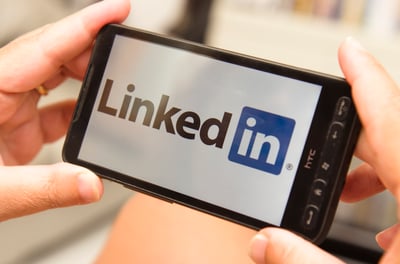October 18, 2023
 by Lesley Vos / October 18, 2023
by Lesley Vos / October 18, 2023

The evolution of content types is undeniable.
Technologies grow, online behavior changes, and users crave variety. It's a time when diverse yet authentic and relatable content works for engagement and brand promotion.
Let's put fresh eyes on content strategy and go beyond old-fashioned content types so you can outperform competitors and draw attention to your brand.
Content types are the forms and structures your assets take after the final revision and presentation to the target audience.
Most marketers stick to a few common content types in their strategy. Blog posts, social media posts, and emails are regular for every marketing campaign. But you actually have 100+ different types of content at your disposal.
Each has three classification elements:
Think of all three when planning a new asset creation within your content marketing campaign. These elements are like the legs of a stool. Take one leg away — and the whole construction will fall.
The primary benefit of integrating diverse content types in your marketing strategy is the guarantee that you’ll appeal to your target audience's different preferences and consumption habits.
But we’ve got three more excellent reasons to diversify.
Not everyone in your audience reads blog posts or spends hours on social media. Some listen to podcasts, and others choose product videos to decide on a purchase. Different types of content allow you to cover more channels and gain a bigger audience.
Content variety boosts engagement. Placing a video on your landing page can increase conversion by 80%! And infographics get 30 times more reads than long-form articles.
Search engines welcome diverse content formats with open arms and higher rankings. Pages with videos are 53 times more likely to reach the SERP's top page.
Custom visuals often rank high on Google Image results and drive substantial traffic to a website. Infographics produce up to 178% more external links.
You've got the point, right?
Diverse content types lead to more distribution channels covered. As a result, you find a bigger, more engaged audience. Combine that with more precise SEO, and you’ve got better marketing results.
There's just one problem.
Most content marketers know that. They listen to promising statistics on popular content formats and the impressive outcomes they bring. They add those formats in content plans, actively generating tons of copycat videos, landing pages, or visuals.
The solution is simple. Stop following their lead and concentrate on outperforming them instead.
In today's rapidly changing world, new platforms and technologies pop up like mushrooms after a spring rain. Users love variety, and their preferences continue to evolve. More than that, AI tools are starting to call the shots in all niches, transforming the content creation process.
With that in mind, it's worth adapting content strategies on time. Follow the emerging trends and refresh your strategy accordingly. Below are the top 10 alternative content types to consider for your marketing campaigns in 2024.
Video content types are aplenty, but live streams are the top trend now. Why?
This format offers a blend of authenticity and interactivity that makes the audience relate to what happens on the screen. It builds user loyalty and trust.
Live streams hold viewer attention 10-20 times longer than pre-recorded, on-demand videos. No wonder the global live streaming market is expected to reach $184.3 billion by 2027.
According to the statistics, 80% of users prefer watching live streams to reading blogs.
When planning a live stream, pay attention to the quality. Audio, lighting, and overall image matter to the audience. Fifty percent leave streams after 90 seconds or less if they see poor quality.
And don’t make anybody wait. Numbers have it that every 6-second delay in the stream's start results in a 6% bounce rate.
Screencasts are videos that record a computer screen with audio narration of what’s happening. This format is perfect for how-to tutorials and presentations. It's super engaging because of the "show, don't tell" principle it uses.
They’re easier to digest for some because they show how to solve a problem step by step. Instead of reading long articles or listening to complex audio instructions, users see how something works or how to make it work.
Your clients and potential clients see and listen to your story on the screen, making it easy for them to remember your message better. Eighty percent say they can recall a video they've seen in the past 30 days.
This content type works for answering the FAQs from the audience. You can also record step-by-step instructions, demonstrate product features, and craft short video lessons on how to use or do something.
Specific screencast software can help create high-quality videos.
Podcasts have made a great comeback since the COVID-19 pandemic. Their audience diversified and underwent growth due to the format's accessibility and convenience. In 2023, the platform continues to grow.
Over 5 million podcasts are active right now, and over 460 million people worldwide regularly listen to podcasts.
Source: Demand Sage
The niche expects to reach 504.9 million active podcast listeners by the end of 2024. You don't want to miss out on such a broad audience, do you?
Podcasts can serve as your alternative channel for brand awareness and user engagement. Sixty-nine percent of listeners say they learn about new brands and products from podcasts. Use this format to explain perplexing topics in your niche, tell a brand story, or introduce new features.
To succeed with a podcast, plan everything through.
If you can't record podcasts, there's still a chance to benefit from them by collaborating with popular podcasters in your industry.
A storyboard is a content format that combines text, images, and illustrations.
Storyboards are super engaging because of how they use visuals to convey an intention. Again, it's all about the power of storytelling. The human brain retains 70% of information through stories; only 10% comes from rough facts, data, or statistics.
Marketers know that the only way to make people want to listen to their message is to tell them a story that appeals to their emotions. A compelling storyline and emotional connection is a surefire combo for a memorable message. The human brain processes visuals 60,000 times faster than text.
Back to "show, don't tell." It's more convincing to see once than to hear twice. A storyboard is a great instrument to help the audience visualize what you have for them.
Think of it as comics showing the sequence of image panels. Use storyboards for presentations, commercials, and product demos. You can craft them as standalone stories or complement your text-based info.
Storyboarding serves best for demonstrating a customer journey. Show them how your brand solves their problems.
Augmented reality (AR) and virtual reality (VR) technologies continue to grow in popularity. The public is thirsty for it. AR and VR elements in your content create a multi-sensory experience, allowing people to reflect on what they see and to feel a sense of belonging. More than that, it engages users on social media.
AR mixes virtual objects with the real world. For marketers, especially those promoting products, it can be a remarkable instrument to demonstrate features and allow users to partially merge with the story to see all the benefits.
Some examples include:
One of the most notable examples of using AR technologies in content is Pokemon Go: Users hunt for virtual creatures in real-life locations. Brands like IKEA use it for shoppers to visualize furniture in their real-life rooms to ensure it fits the overall design.
You already know the power of visuals. It’s part of why infographics are so engaging and malleable. Instructographics are now taking things a step further. The core difference between infographics and instructographics is the latter's sharper focus.
While infographics talk about everything, instructographics teach the audience how to do something.
For example, you design an infographic about the most popular colors to paint a kitchen. But a corresponding instructographic could be about how to choose a proper color for your kitchen or how to paint your kitchen in this or that color. This content type is extra engaging because it explains complex data in an easy-to-digest format.
Instructographis are about storytelling (yes, again!). Visually pleasing yet actionable, this content saves you time on writing long how-to guides. You can make beautiful instructographics with online design tools even with no professional designer on the team.
The format is perfect for social media accounts because they \have a high sharing potential. Use them to craft step-by-step instructions to answer your audience’s questions. Show them how your brand could be a solution to their problems.
There’s been an uptick of carousel posts on LinkedIn lately. That’s because their interactive nature earns higher engagement. Content creators see them as an extra opportunity to present complex data and showcase their brands in a format users love.
It’s not just LinkedIn alone. Carousels are already natural on Instagram, generating the highest number of comments and 1.92% higher engagement rates than single images. You can also add them as a visual component to text content on your blog or landing page.
Social media sites like Instagram and TikTok let entrepreneurs sell products right from the posts on their accounts. The boom of these shippable posts is inevitable.
Social commerce is on the rise. Millennials and Gen Z prefer shopping on social media, and this tendency turns social platforms into marketing channels.
Social platforms launch more and more features for users to shop through a brand's photos and videos. If you're in e-commerce, this format is essential for your content strategy. Consider formats like shoppable posts, videos, user-generated content (UGC), and ads.
This kind of content helps with:
For your shoppable posts to bring results, be authentic and transparent. People want to buy from brands with social responsibility and values. So create content that demonstrates your humanity.
Ephemeral content is time-restricted, intentionally leveraging your base’s FOMO. It's visual content on social media that "lives" for 24 hours.
The most common example is Instagram Stories. Other platforms like Facebook, Snapchat, LinkedIn, and WhatsApp also provide content creators with this feature.
Users understand the content's short life span and hurry up to check it out before it disappears. It's a great instrument for improving communication with customers and encouraging interaction.
Use it to:
Use instruments like stickers, filters, polls, emojis, quizzes, and live videos. Repurpose your existing formats into bite-sized ephemeral content assets.
Stick to your brand style and tone of voice, and don't overwhelm the audience with too much publishing.
Quizzes, tests, polls, and any other content format with gamification elements will amplify your marketing endeavors. The reason lies in its interactive nature. It appeals to one of the basic human instincts – connection with others.
Gamified content is engaging. 88% of marketers admit it helps their brands stand out from competitors and brings 2 times more conversions. It can also assist with collecting data about your prospects to refine your marketing strategy further.
Polls, quizzes, and games are more common on social media, but try to add some gamified elements to your website and blog posts. It will help improve behavioral factors, like dwell time and bounce rate, influencing the website's overall performance.
A few ideas for gamified content besides well-known quizzes and polls include interactive maps, flash spatial, interactive charts, panoramas, and GIFs.
You must understand the magic of individual content formats, but they will work only when effectively integrated into your marketing strategy.
Below are some tips on using all content formats to your advantage.
Craft a cohesive content strategy that will complement different formats. That way, you can use instructographics on landing pages or follow up a podcast episode with a blog post. It gives the audience more maneuvering room to consume your content. Moreover, it serves to reinforce your message.
Document your content strategy in advance. According to Semrush, 80% of the most successful marketers do that. With a content strategy "on paper," it's easier to implement everything you planned.
Marketers want their content to sell, but it's wrong to put the focus solely on selling. Content is also about reflection. Choose formats and contexts that reflect your prospects' fears, desires, and beliefs.
Content marketing is about who you're selling to, not what you are selling. For your content strategy to convert, it is important to organize leads. Consider the sales funnel stages to align each group with their preferences and engage them with corresponding content types.
Content repurposing is a surefire way to get the most out of every asset you create. Around 60% of marketers reuse content twice or thrice, turning one format into another.
For example, your blog post can become an instructographic, a podcast episode, or a series of social media posts. Turn long reads into carousels or screencasts into storyboards.
Cross-promotion serves for better visibility and engagement. Use it to maximize your content reach and guide the audience toward your offers.
You can mention your new blog post in a podcast or a live stream, promote your instructographic via ephemeral content on social media, or enrich your landing page with a storyboard.
In 2024, stellar content is about authenticity, transparency, and quality. Competition is enormous. Anyone able to engage prospects with relatable content types will win.
Build a strong connection with your customers by reflecting on their content preferences and online behavior. Refresh your strategy with brand-new content formats.
Live streams, podcasts, screencasts, AR elements, and carousels – all serve to satisfy your audience’s craving for variety. Start creating diverse content types to expand user engagement and outperform the competition.
Learn all about scrollytelling and how it helps transform content and visually engage readers.
Lesley is a content creator with 9+ years of experience in web writing. Currently blogging at several educational blogs, she's also contributing to many publications on business, marketing, and lifestyle.
Ever feel like your best content isn’t getting the attention it deserves? You spend hours...
 by Sumeet Anand
by Sumeet Anand
Traditionally, a company’s marketing team is separate from its sales team.
 by Anu Ramani
by Anu Ramani
With thousands of articles being published on LinkedIn every day, it's important to go the...
 by Gaetano DiNardi
by Gaetano DiNardi
Ever feel like your best content isn’t getting the attention it deserves? You spend hours...
 by Sumeet Anand
by Sumeet Anand
Traditionally, a company’s marketing team is separate from its sales team.
 by Anu Ramani
by Anu Ramani


